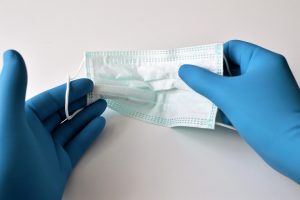China is seeing a new surge in coronavirus cases in its frozen northeast as a World Health Organization team arrived to investigate the origins of the pandemic. On January 14 the country reported its first new death attributed to COVID-19 in months, raising the toll to 4,635 among 87,844 cases.
Officials said on January 14 that Heilongjiang province in the region traditionally known as Manchuria recorded 43 new virus cases, most of them centered on the city of Suihua outside the provincial capital of Harbin. The northern province of Hebei just outside Beijing has seen China’s most serious recent outbreak and reported 81 more cases. The Hebei outbreak is of particular concern because of the province’s close proximity to Beijing.
Hebei’s provincial capital, Shijiazhuang, has accounted for the vast majority of recent cases. Travel to and from three cities, Shijiazhuang, Xingtai and Langfang, has been suspended and residents of some communities have been told to stay home for the next week.
All of Shijiazhuang’s roughly 10 million people have been ordered to undergo a second round of testing as authorities seek to isolate the sources of the outbreak. Some of the infections have been tentatively linked to wedding gatherings.
China has put more than 20 million people under varying degrees of lockdown in Hebei, Beijing, and other areas in hopes of stemming infections ahead of next month’s Lunar New Year holiday. The government has cut travel links to and from several cities, urged people to stay put for the holiday, postponed important political gatherings, and plans to let schools out a week early to reduce the chances of infection.
China’s relatively low case figures are a testimony to the effectiveness of strict containment, tracing and quarantine measures, but have also raised questions about the tight hold the government maintains on all information related to the outbreak.
Also on January 14, a 10-member WHO team arrived in the central city of Wuhan where the virus was first detected in late 2019. The visit was approved by President Xi Jinping’s government after months of diplomatic wrangling that prompted an unusual public complaint by the head of the WHO.
State broadcaster CGTN said the team will be quarantined for two weeks and will undergo testing for the virus. They are to start working with Chinese experts via video conference while in quarantine.
Scientists suspect the virus that has killed 1.9 million people since late 2019 jumped to humans from bats or other animals, most likely in China’s southwest. The ruling Communist Party, stung by complaints it allowed the disease to spread, has suggested the virus came from abroad, possibly on imported seafood, but international scientists reject that.
The WHO team includes virus and other experts from the United States, Australia, Germany, Japan, Britain, Russia, the Netherlands, Qatar, and Vietnam.
China’s government considers the topic of COVID-19’s origins to be politically sensitive, leading to uncertainty about whether Beijing might try to prevent embarrassing discoveries. An AP investigation found the government imposed controls on research into the outbreak and bars scientists from speaking to reporters.
A government spokesman said this week the WHO team will “exchange views” with Chinese scientists but gave no indication whether they would be allowed to gather evidence.
By the Associated Press, with reporting from Sam McNeil in Wuhan, China and Huizhong Wu in Taipei, Taiwan.
































